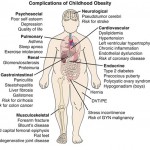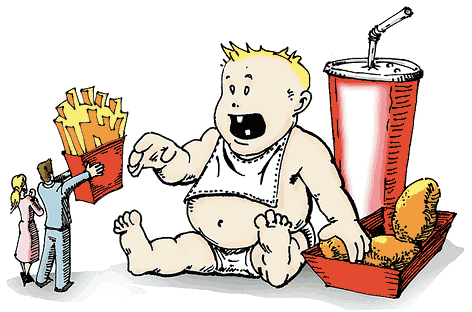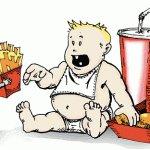In February of this year, First Lady Michelle Obama presented her ambitious Let’s Move campaign to battle the terrifying childhood obesity epidemic. Lady Obama was inspired not only from her family and children’s lifestyle, but also by some startling obesity statistics that have been gathered by medical researchers over the past thirty years. A child is considered obese if their BMI (Body Mass Index) is 30 or higher, and this BMI level in anyone, especially children has the potential to cause very severe health issues.
It is necessary for anyone who cares about the well-being of their child to find out the childhood obesity facts. It will assist you to possess a notion of just how poor the circumstance has become, and choose to embark on the wholesome consuming quest that will turn into a lifestyle available for you as well as your family. In just about every single country for the deal with of the earth, obesity, much more so childhood obesity is rapid for the rise. The leads to are countless. However, it seems that the alter in lifestyles is usually a key contributor.
- Childhood obesity has more than tripled in the past 30 years.
- The percentage of children aged 6–11 years in the United States who were obese increased from 7% in 1980 to nearly 20% in 2008. Similarly, the percentage of adolescents aged 12–19 years who were obese increased from 5% to 18% over the same period.
- According to towards researchers in the Centers for illness manage and Prevention (CDC), there is no considerable alter in conditions of statistics, while in the quantity of kids and adolescents aged two to 19 having a large entire body Mass Index (BMI) for age in between 2003-2004 and 2005-2006. That was the 1st time the prices do not increase.
- In 2008, more than one third of children and adolescents were overweight or obese.
- Correct now, there are much more people in the USA who are obese than people who are overweight.
- Overweight is defined as having excess body weight for a particular height from fat, muscle, bone, water, or a combination of these factors. Obesity is defined as having excess body fat.
- If both parents are overweight, a child’s likelihood of being overweight is increased by 60-80%. The chance of an obese child growing into an obese adult is about 70%. Children perceive the number one immediate issue of being overweight is social discrimination, as reported by overweight children. This has the ability to prevent them from exercising with other children, which leads to antisocial and depressive tendencies, as well as lifetime psychological effects.
- Overweight and obesity are the result of “caloric imbalanceâ€â€”too few calories expended for the amount of calories consumed—and are affected by various genetic, behavioral, and environmental factors.
Health Effects of Childhood Obesity
 Childhood obesity has both immediate and long-term effects on health and well-being.
Childhood obesity has both immediate and long-term effects on health and well-being.
Immediate health effects:
- Obese youth are more likely to have risk factors for cardiovascular disease, such as high cholesterol or high blood pressure. In a population-based sample of 5- to 17-year-olds, 70% of obese youth had at least one risk factor for cardiovascular disease.
- Obese adolescents are more likely to have prediabetes, a condition in which blood glucose levels indicate a high risk for development of diabetes.
- Children and adolescents who are obese are at greater risk for bone and joint problems, sleep apnea, and social and psychological problems such as stigmatization and poor self-esteem.
Long-term health effects:
- Children and adolescents who are obese are likely to be obese as adults and are therefore more at risk for adult health problems such as heart disease, type 2 diabetes, stroke, several types of cancer, and osteoarthritis. One study showed that children who became obese as early as age 2 were more likely to be obese as adults.
- Overweight and obesity are associated with increased risk for many types of cancer, including cancer of the breast, colon, endometrium, esophagus, kidney, pancreas, gall bladder, thyroid, ovary, cervix, and prostate, as well as multiple myeloma and Hodgkin’s lymphoma.
The cost of obesity is high. Not only are there lifelong health issues to consider, but those who are obese pay an average 30% more in health costs, and 77% more in medication costs. It requires more foods that are high in “empty†calories to provide energy, and larger meals in general are much more expensive.
Prevention
- Healthy lifestyle habits, including healthy eating and physical activity, can lower the risk of becoming obese and developing related diseases.
- The dietary and physical activity behaviors of children and adolescents are influenced by many sectors of society, including families, communities, schools, child care settings, medical care providers, faith-based institutions, government agencies, the media, and the food and beverage industries and entertainment industries.
- Schools play a particularly critical role by establishing a safe and supportive environment with policies and practices that support healthy behaviors. Schools also provide opportunities for students to learn about and practice healthy eating and physical activity behaviors.


